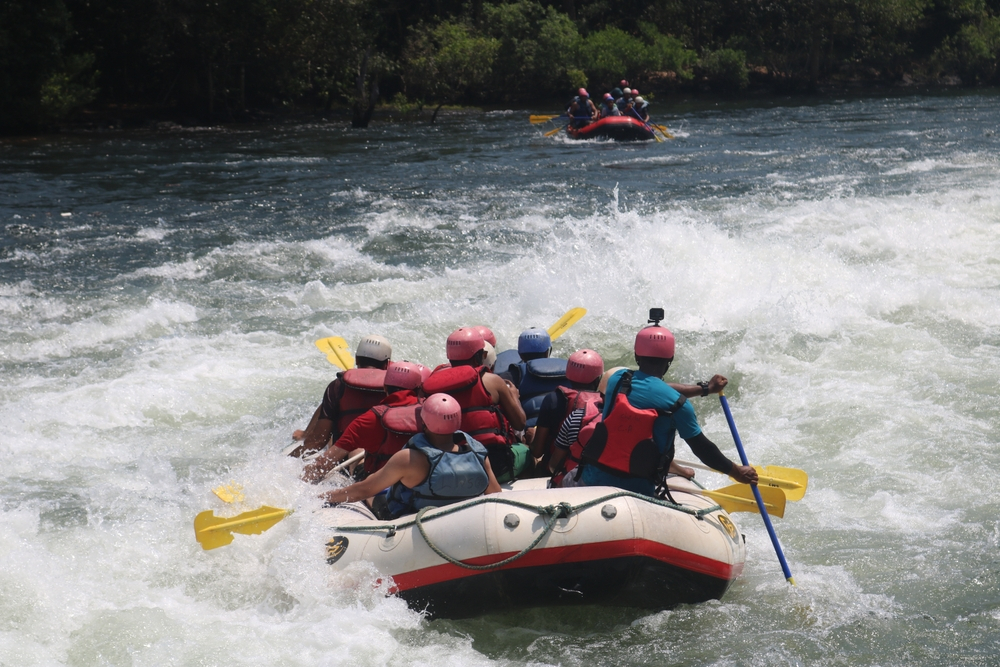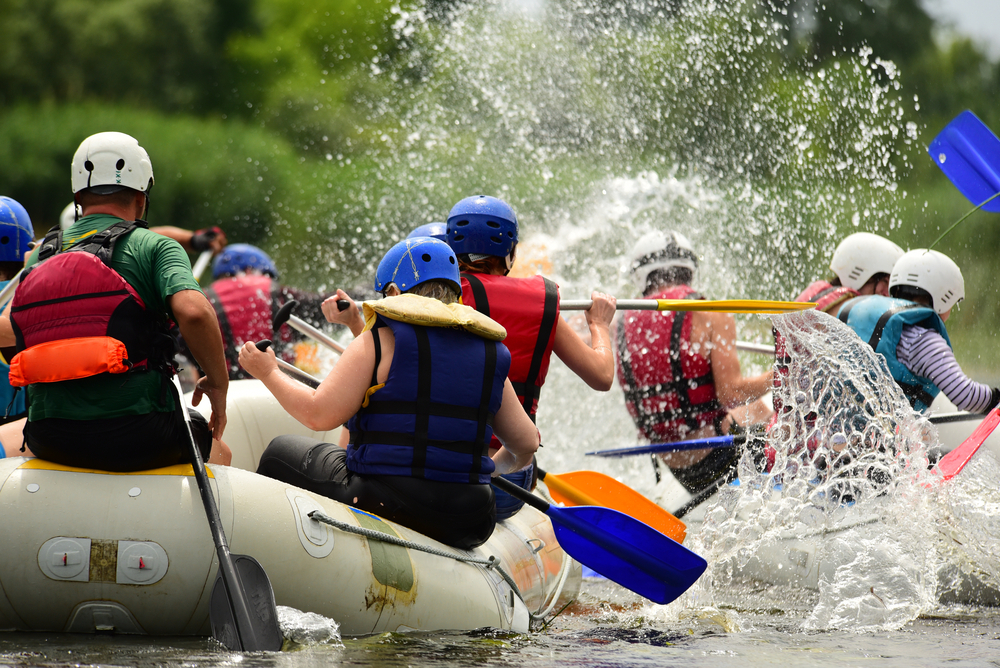Thrill and Tranquility: The Art of River Rafting
In the heart of nature’s raw grandeur, where rugged landscapes meet rushing currents, exists an exhilarating sport that combines adrenaline-pumping adventure with moments of serene tranquility: river rafting. With every paddle stroke, participants navigate the untamed waters, forging a path through rapids and canyons, all while immersing themselves in the pristine beauty of river ecosystems. This block explores the essence of river rafting, delving into its history, techniques, safety measures, and the profound connection it fosters between humans and the natural world.
A Journey Through History

River rafting traces its roots back to ancient civilizations, where waterways served as vital conduits for transportation and commerce. Early forms of rafting were primarily utilitarian, with makeshift vessels crafted from logs or bundled reeds used to ferry goods and people across rivers. As time progressed, adventurous spirits began to recognize the recreational potential of navigating these same waterways, sparking the evolution of modern-day river rafting as a thrilling outdoor pursuit.
The advent of inflatable rafts in the mid-20th century revolutionized the sport, making it more accessible to enthusiasts of all skill levels. What was once the domain of intrepid explorers and seasoned adventurers became an activity enjoyed by families, friends, and thrill-seekers alike.
Conquering the Currents: Techniques and Skills
River rafting demands a blend of physical prowess, mental acuity, and teamwork. At its core, the sport revolves around navigating rivers of varying difficulty levels, each presenting its own set of challenges and obstacles. From gentle Class I rapids to raging Class V torrents, rafters must possess a keen understanding of water dynamics and mastering essential techniques to safely traverse the tumultuous waters.
One of the fundamental skills in river rafting is paddle proficiency. Rafters must synchronize their movements, employing precise strokes to propel the raft forward, steer around obstacles, and maintain stability in turbulent conditions. Communication is paramount, with experienced guides or trip leaders issuing commands to coordinate the efforts of the entire crew.
Additionally, mastering the art of reading the river is essential for navigating safely. By recognizing subtle cues such as changes in water color, surface features, and the behavior of currents, rafters can anticipate potential hazards and choose the optimal route through rapids and obstacles.
Safety First: Mitigating Risks on the River
While river rafting offers an unparalleled adrenaline rush, it is not without its inherent risks. From submerged rocks and powerful hydraulics to swift currents and unpredictable weather, numerous factors can contribute to accidents or mishaps on the water. However, with proper preparation, equipment, and adherence to safety protocols, the likelihood of encountering dangerous situations can be significantly mitigated.
Before embarking on a river rafting excursion, participants undergo thorough safety briefings conducted by experienced guides or instructors. These sessions cover essential topics such as proper fitting and use of personal flotation devices (PFDs), emergency procedures, and techniques for self-rescue in the event of capsizing.
Furthermore, reputable rafting outfitters adhere to stringent equipment maintenance standards, ensuring that inflatable rafts, paddles, helmets, and other gear are in optimal condition. Regular inspections and safety checks are conducted to identify any potential issues and address them proactively.
In addition to proactive measures, effective risk management involves situational awareness and swift decision-making on the water. Guides assess environmental conditions, gauge the skill level of participants, and adjust the itinerary or route as necessary to ensure a safe and enjoyable experience for all.
A Symphony of Senses: Immersing in Nature's Splendor

Beyond the adrenaline-fueled excitement and technical challenges, river rafting offers participants a profound connection to the natural world. Drifting along crystal-clear waters flanked by towering cliffs and verdant forests, rafters are enveloped in a sensory tapestry of sights, sounds, and sensations.
The rhythmic cadence of paddle strokes reverberates through the air, punctuated by the rush of water cascading over rocks and the calls of wildlife echoing along the riverbanks. With each bend in the river, new vistas unfold, revealing hidden gorges, ancient rock formations, and secluded oases teeming with biodiversity.
Moreover, the immersive nature of river rafting provides a respite from the hustle and bustle of modern life, allowing participants to unplug and reconnect with the rhythms of nature. In a world increasingly dominated by screens and distractions, the simplicity of navigating a river offers a refreshing escape, fostering moments of introspection, camaraderie, and pure, unadulterated joy.
Preserving the Pristine: Conservation and Stewardship
As custodians of the natural environment, river rafting enthusiasts bear a responsibility to safeguard the pristine ecosystems they cherish. Recognizing the delicate balance between human recreation and ecological preservation, conservation efforts are integral to the ethos of the sport.
Through partnerships with environmental organizations, river stewardship initiatives, and sustainable tourism practices, rafting outfitters and local communities work together to minimize the impact of human activities on river ecosystems. This includes practices such as Leave No Trace principles, responsible waste management, and habitat restoration projects aimed at preserving the integrity of riparian habitats.
Furthermore, education plays a pivotal role in promoting environmental awareness and fostering a deeper appreciation for the interconnectedness of all living things. By instilling a sense of reverence for the natural world in participants, river rafting experiences serve as catalysts for environmental stewardship, inspiring individuals to become advocates for conservation in their own communities.
Conclusion: Embracing the Flow
In the realm of outdoor adventure, few experiences rival the thrill and majesty of river rafting. From navigating raging rapids to drifting lazily down meandering waterways, each journey on the river offers a tapestry of unforgettable moments and timeless memories.
Yet, beyond the adrenaline-fueled excitement and technical challenges, river rafting is a profound celebration of the human spirit and our innate connection to the natural world. It is a testament to the transformative power of adventure, forging bonds of camaraderie, fostering moments of introspection, and igniting a lifelong passion for exploration.
As the sun sets on another day on the river, and the echoes of laughter fade into the twilight, one thing remains abundantly clear: in the timeless dance between man and nature, it is not the destination that defines the journey, but rather the journey itself—a symphony of thrill and tranquility, woven together by the gentle currents of the river.
